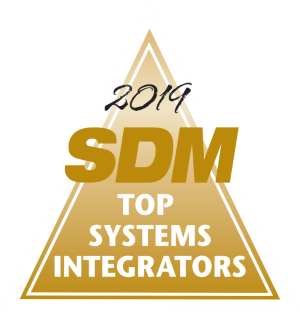Are you selling lighting control as part of your overall security package? If you’re not you could be missing out on an opportunity to be seen as a residential installation expert, believes Ric Johnson, president of Right@Home Technologies Ltd. In this edition of Home Technology Now, Ric shares his ideas and experiences about the lighting market, including how integrators can get involved in it.
Q: What is the top selling point to customers asking about lighting systems?
A: When we discuss lighting control with our clients, we talk about ease of use, auto off/on and, in an emergency, lighting pathways to exits. Just about everyone today is looking to reduce their energy use footprint; with a properly designed and installed lighting system, which includes control and the lighting source, we can provide proper lighting as well as energy savings.
Q: How can lighting be an add-on to a security system?
A: Adding an all-on/all-off, emergency flashing program to the security package can help define you as an expert in residential security. Tying zones to lighting in the proper area can discourage break-ins, alert neighbors and lead authorities to the intrusion.
What we like to do first is use the proper panel and accessories for the application, then build the lighting into each security zone and settings. During the daytime hours, we look to adding front of house flashing of post light, porch lights and garage lights if the perimeter is broken while armed. We then use the astronomical clock feature to add exterior and key interior lights that come on at dusk.
Using the wireless device apps available, we then add lighting keys to macros in these apps to turn off all lights when running the “Goodbye” macro, turn on specific lights when running the “Welcome Home” macro, and — by working closely with the client — other macros, such as “kids home,” “meeting with friends,” etc. These macros allow the user to avoid a daily, easily interpreted, repeating program that potential intruders could observe.
Q: Do you prefer working with wired or wireless lighting options?
A: It really depends on the situation. We work closely with three manufacturers, with preference for one of them, but all three offer both wired and wireless. Our favorite allows the electrical contractor to wire normally or retrofit in an existing structure. This option is wireless, but allows for easy replacement or additions as the client desires.
Q: How are LEDs being integrated into lighting projects?
A: I really hate the CFL lamps; they provide poor lighting. They hurt seniors’ vision and are too harsh for everyday use. We have gone to LEDs in every application. In a recent home renovation project, we used 90 percent LEDs with only the bath fans (CFLs), closet lights (CFLs), and a few specific ceiling fixtures (incandescent and Halogen). On a current project, working with the electrical contractor and decorator, we believe we will achieve 100 percent LEDs.
Q: What resources would help a security professional learn how to integrate lighting control into their systems?
A: Just like any other area of security, training and collaboration with other trades is the key to success. Talking with suppliers and distributors, working out a partnership with the electrical contractor, and taking all training that becomes available will help ensure the security professional can compete in the marketplace.
Also, never install anything in a client’s home that has not been installed in your home and tested for a period of time. Nothing but real-world experience with the product will allow you to speak authoritatively to your clients.
Q: Is there anything else about lighting you would like SDM’s readers to know?
A: Lighting control is much more than just installing smart switches. A properly installed lighting system encompasses all three levels of lighting, understanding how the end user will be living in the space, and how to add it properly into the security system to create a total protection umbrella that both protects the client and discourages would-be intruders. A properly designed lighting system covers 100 percent of the client’s uses and leaves little or no blind spots in the coverage.
Contributed by the Custom Electronic Design & Installation Association. To learn more about CEDIA membership visit www.cedia.org/join.
Ric Johnson, DHT I+, is president and CEO of Right@Home Technologies Ltd., Waynesfield, Ohio, a specialty electronics company that is parent to Ric’s Electric, a State of Ohio licensed electrical contractor specializing in solutions for the Active Adult and Elite Systems Solutions.









